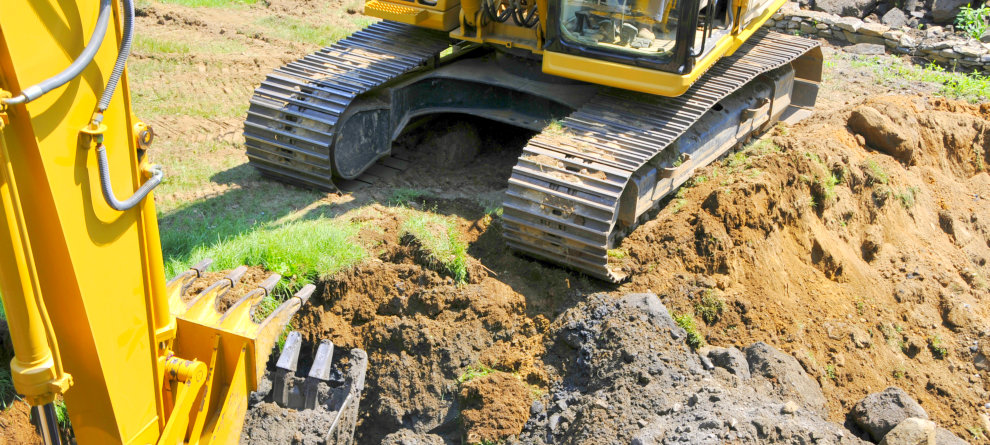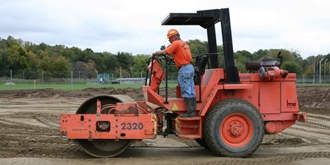Commercial Lancaster Trenching - Trenching Services for Companies in Lancaster
Commercial Lancaster Trenching - Trenching Services for Companies in Lancaster
Blog Article
In-Depth Exploration: The Science Behind Superior Excavation Practices
The realm of excavation methods is a domain name where science intertwines with craftsmanship to unearth the secrets concealed under the earth's surface. From ancient hand tools to contemporary hydraulic excavators, the development of excavation strategies has actually been a testimony to human resourcefulness and technological innovations. However, what really establishes premium excavation techniques apart is a deep understanding of geological concepts, paired with the application of advanced tools and methodologies. By checking out the scientific research behind these techniques, we can reveal the tricks that lie underneath our feet and appreciate the precision and expertise that enter into every dig.
Evolution of Excavation Techniques
Throughout background, the advancement of excavation strategies has played a critical function beforehand building techniques and archaeological discoveries. From the primary devices used by our forefathers to the advanced machinery utilized in modern-day times, the development of excavation approaches has substantially changed how we come close to different projects.
In old times, manual work with standard tools such as wheelbarrows, shovels, and pickaxes was the main method of excavation. This labor-intensive procedure restricted the depth and extent of excavations, typically causing slow-moving development and restricted accessibility to specific sites. As people advanced, so did the devices and strategies utilized for excavation.
The Industrial Change noted a turning point in excavation experiment the intro of steam-powered machinery. This technology transformed the field, permitting for faster and more comprehensive excavations. In modern times, technology plays a critical function in excavation, with advancements like GPS systems, drones, and 3D scanning improving accuracy and effectiveness in the field. The development of excavation strategies proceeds to form the way we build, explore, and understand the world around us.
Role of Innovation in Excavation

The integration of sophisticated innovation has actually fundamentally revolutionized the field of excavation, enhancing accuracy and efficiency to unmatched degrees - excavating ohio. One of the vital technical developments that has actually significantly affected excavation techniques is the use of GPS systems.
In addition, the introduction of 3D modeling and simulation software program has streamlined the planning procedure for excavation tasks. Designers and operators can currently visualize the entire excavation procedure prior to breaking ground, determining possible challenges and enhancing process. In conjunction with this, the execution of drones in excavation tasks has actually helped with aerial surveys, volumetric dimensions, and website inspections with unequaled rate and precision.
Geological Concepts in Excavation
An understanding of geological principles is necessary for making certain the architectural honesty and security of excavation sites. Geological factors play a vital duty in establishing the usefulness and safety and security of excavation tasks (dump truck companies in ohio). One key geological principle to consider is the kind of dirt or rock existing at the website. Various dirt kinds, such as gravel, sand, or clay, have varying levels of security and require different excavation techniques. For example, natural dirts like clay might need additional support to stop collapses, while sandy soils might be vulnerable to disintegration during excavation.
Furthermore, the geological framework of the location, including mistakes, fractures, and rock formations, have to be very carefully evaluated to recognize prospective dangers and difficulties. Digging deep into near mistake lines or unstable rock developments can result in instability and possible risks. By conducting extensive geological studies and analysis, excavators and engineers can create techniques to mitigate dangers and ensure the successful completion of excavation tasks. Ultimately, including geological principles into excavation practices is essential for attaining secure, reliable, and lasting outcomes.

Most Recent Devices for Excavation
In the world of excavation techniques, modern innovations in devices have actually changed the performance and accuracy of excavation procedures. Among the most up to date devices making waves in the web market is making use of drones furnished with sophisticated imaging innovation. These drones can supply in-depth aerial surveys of excavation websites, supplying real-time information on topography and possible dangers. This info aids in better preparation and decision-making throughout the excavation process.
One more cutting-edge device obtaining popularity is the execution of 3D printing modern technology for producing custom excavation tools. This enables the manufacturing of specialized devices that are tailored to the details demands of a project, raising efficiency and reducing downtime.
In addition, advancements in products science have led to the growth of more powerful and much more durable excavation tools. lancaster trenching. Tungsten carbide-tipped excavator attachments, for example, offer exceptional performance in challenging ground problems, boosting productivity on-site
Scientific research's Influence on Excavation Practices

In addition, scientific research study on dirt mechanics and geotechnical engineering has actually provided important understandings right into soil habits, permitting excavation experts to make enlightened choices pertaining to excavation approaches and dirt stablizing methods. In general, scientific research continues to drive advancement and improvement in excavation techniques, making excavation projects a lot more reliable, cost-efficient, and lasting.

Verdict
Finally, the development of excavation techniques has been greatly affected by improvements in technology and a much deeper understanding of geological principles. The most current devices and devices used in excavation have enhanced efficiency and precision in the field. The application of clinical knowledge has actually substantially improved excavation techniques, resulting in extra sustainable and effective approaches click to find out more for digging deep into different kinds of materials.
In the realm of excavation practices, contemporary advancements in tools have actually revolutionized the effectiveness and precision of excavation procedures. By leveraging scientific concepts, the excavation sector has been able to considerably enhance efficiency, precision, and safety and security in excavation procedures. GPR permits excavation groups to non-invasively check and map subsurface structures, utilities, and potential threats, allowing them to prepare excavation tasks with higher precision and decreased risk of accidents.
Furthermore, clinical research study on soil auto mechanics and geotechnical design has actually offered useful insights right into dirt behavior, enabling excavation specialists to make enlightened choices relating to excavation techniques and dirt stabilization strategies. Generally, science proceeds to drive development and enhancement in excavation practices, making excavation jobs more efficient, economical, and sustainable.
Report this page